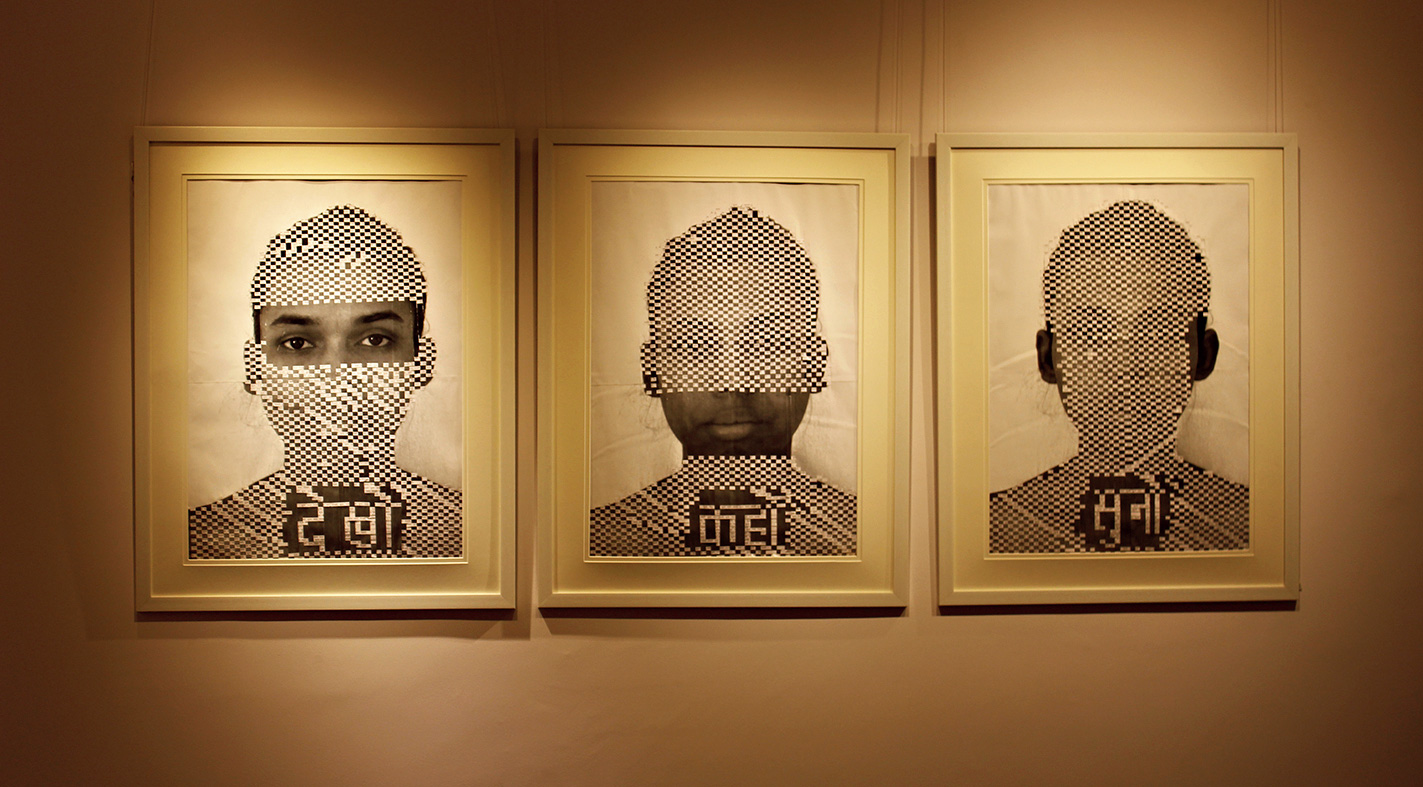What draws viewer attention to young Arpita Akhand is her astonishment at things taken for granted: the five senses with which living creatures must apprehend, negotiate, and control their world. Eyes, ears, nose, mouth and fingers thus compose a leitmotif through her collages and installations. And yes, her performances, too. In her first solo show, held in the White Cube at Janus, she returns to what can be called the underlying theme of her art, to dwell upon it with a kind of wry, anxious, troubled obsession.
Tiny clay models of these features are arranged at the entrance itself like a welcome alpona that the viewer must step on to enter the gallery. This symbolic gesture of desecration and destruction the viewer is complicit in — of whatever’s hallowed and valued, whether art or the human senses — provokes debate around sanctity and iconoclasm, and proposes that the senses are abused and sensibility is manipulated through rhetoric and violence by acts both planned and unplanned.
That such acts are invasive and authoritarian is seen in Dekho-Kaho-Suno. In an ironical take on the three wise, evil-spurning monkeys, she weaves strips of white paper across digital prints of her own face. The effect is of a netted sheath smothering the faculties to debar them from what’s considered ill-advised: a censorship of both the individual and of definitions of bad and good. Another work is a vertical panel that tirelessly repeats the artist’s face multiple times with blurred, nervous, shadowy outlines, as though recording seismic — or maybe psychic — disorders. This slyly self-mocking Warholian riff throws up contentious ideas: of fragile identities and their loss in a culture of mass production.
Hunching over the floor for her performance, Akhand is feverishly concentrated as she specifies with a chalk the organs and their faculties. Like the eye and vision, for example. She pushes herself along, changing the words, so that eyes are paired with smell and ears with taste and so forth: an act of vandalism that questions the comfortable certitude about meaning in language. Just as Akhand’s art seems to question the sanctity of empirical understanding.











